32 µmol nitrate per liter – fantastic!! Better than I dared to dream.
But let’s start from the beginning. The main objective of our study is to unravel how changes in upwelling intensity affect the food web and elemental cycling in the Peruvian upwelling system. Simply speaking, should upwelling intensity decline let’s say by 50% due to climate change, does primary production, trophic transfer and the export of carbon to depth also decline by 50%? Or are there non-linearities in the system, possibly even tipping points where the ecosystem changes into a new steady-state when a certain threshold level is passed?
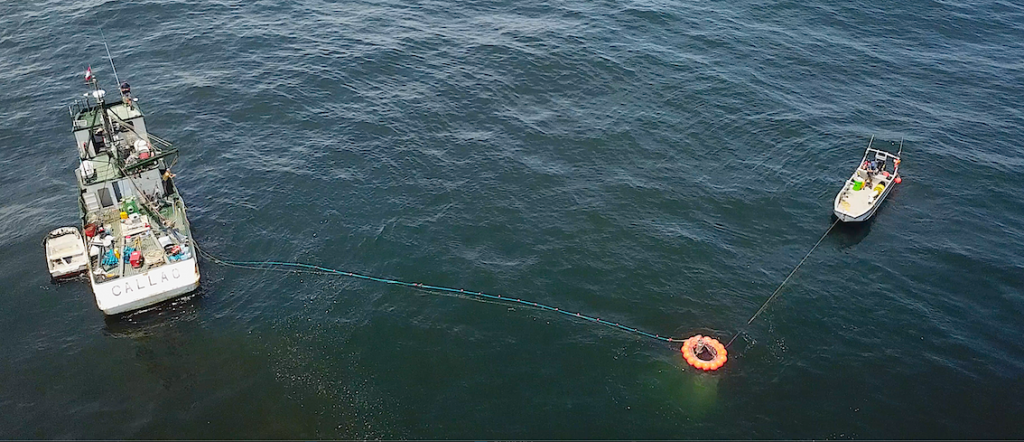
To address these questions we will simulate upwelling at different intensities in our nine mesocosms. For this we need the kind of deep water that is typically upwelled in the Peruvian coastal system, ideally rich in nitrate, as this is the nutrient limiting phytoplankton growth. Finding such water in the coastal system is not so straightforward, because deep water here is often strongly depleted in nitrate. This is because nitrate is consumed by bacteria when there is no or low oxygen. And the waters off Peru are very low in oxygen and often completely anoxic below the upper surface layer.
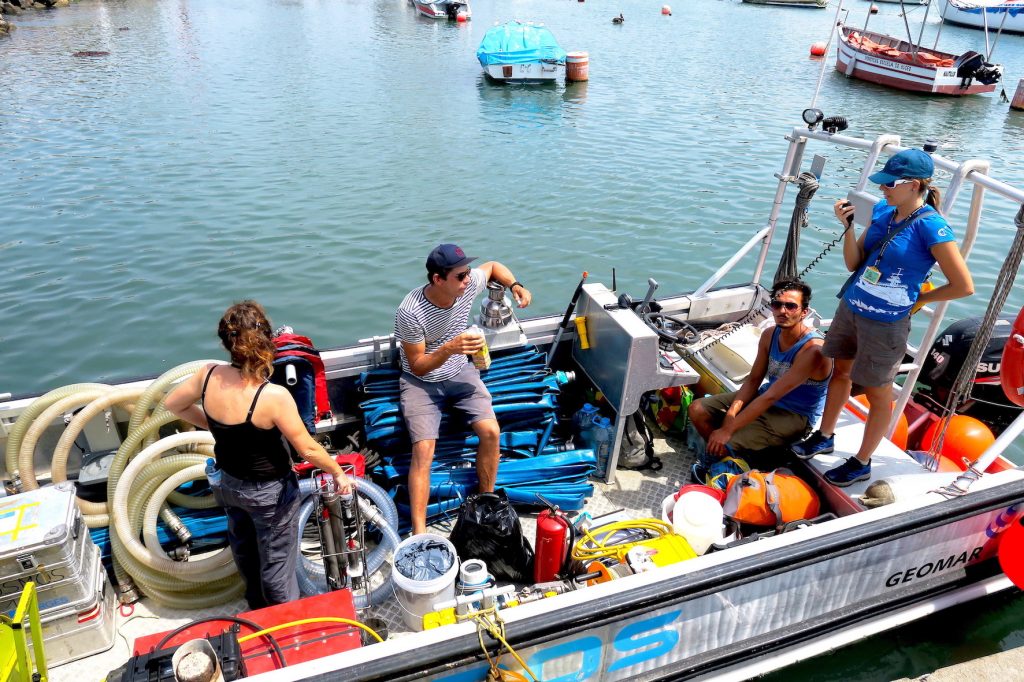
For the deep water hunt our working boat Wassermann was loaded with equipment and joined forces with IMARPE’s research vessel IMARPE VI. Starting just west of the mesocosm site depth profiles of the nitrate concentration were taken repeatedly on the way out to the open sea with a specific nitrate sensor. By the time the right deep water was found, it was already dark, not ideal for starting the deep-water pumping. So the crews of IMARPE VI and Wassermann met again at 5 a.m. the next morning, hoping there was still the right deep water at the location where we found it the night before. The big suspense was lifted when the nitrate sensor was lowered again to depth. 25-30 µmol per liter at 40 m depth: YES!!!
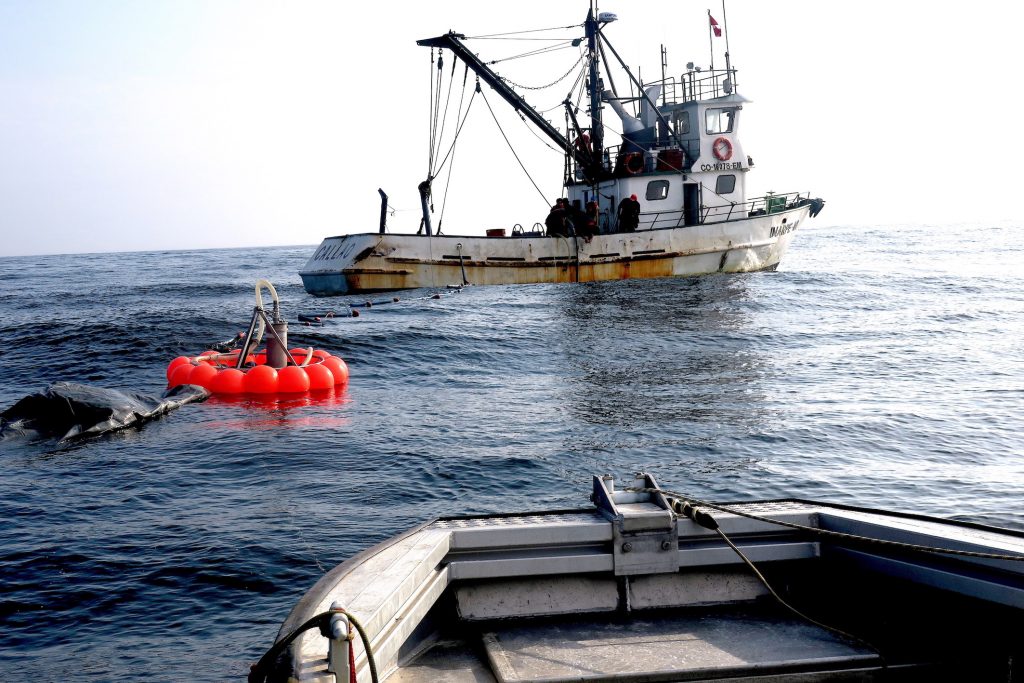
What followed was a long day of pumping of this water into our bolsa de agua enorme, the huge deep-water collector, which can hold up to 100,000 liters of water. Five hours later the bag was filled and prepared for its ride to the mesocosm site, pulled at low speed by IMARPE VI.
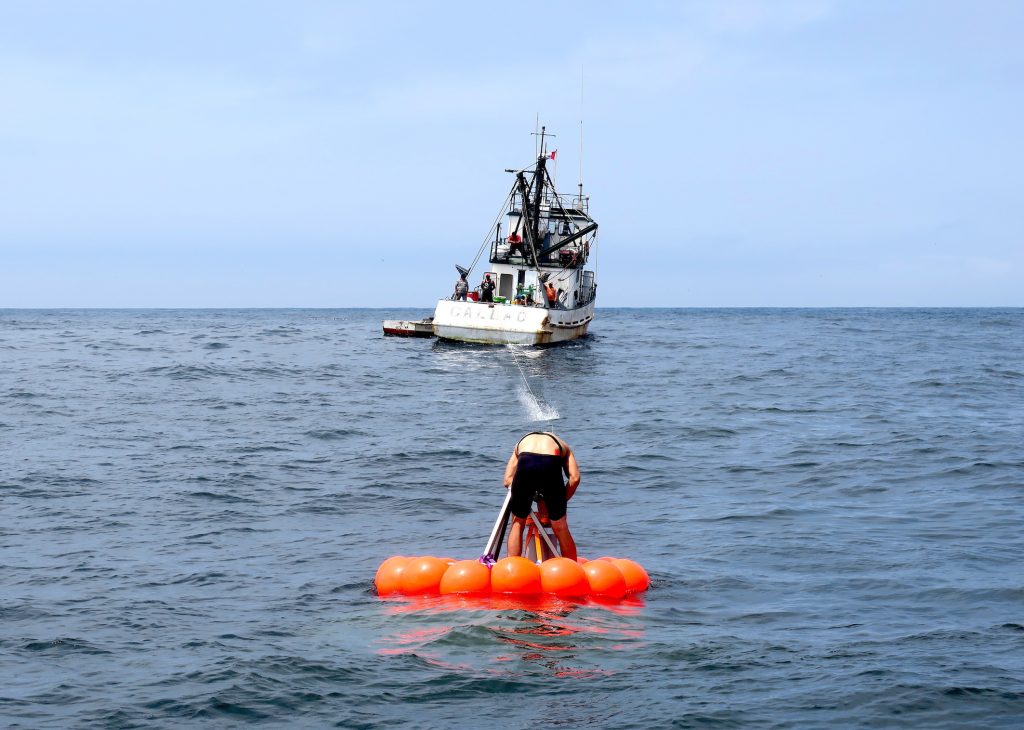
Photo by Ulf Riebesell.
When we arrived at the mesocosm site the sun was already kissing the horizon and our diving team was waiting to tie our bolsa enorme at its designated place in the mooring. There were lots of smiling faces of happy deep-water hunters on Wassermann and IMARPE VI when we waved good-bye to each other that night.
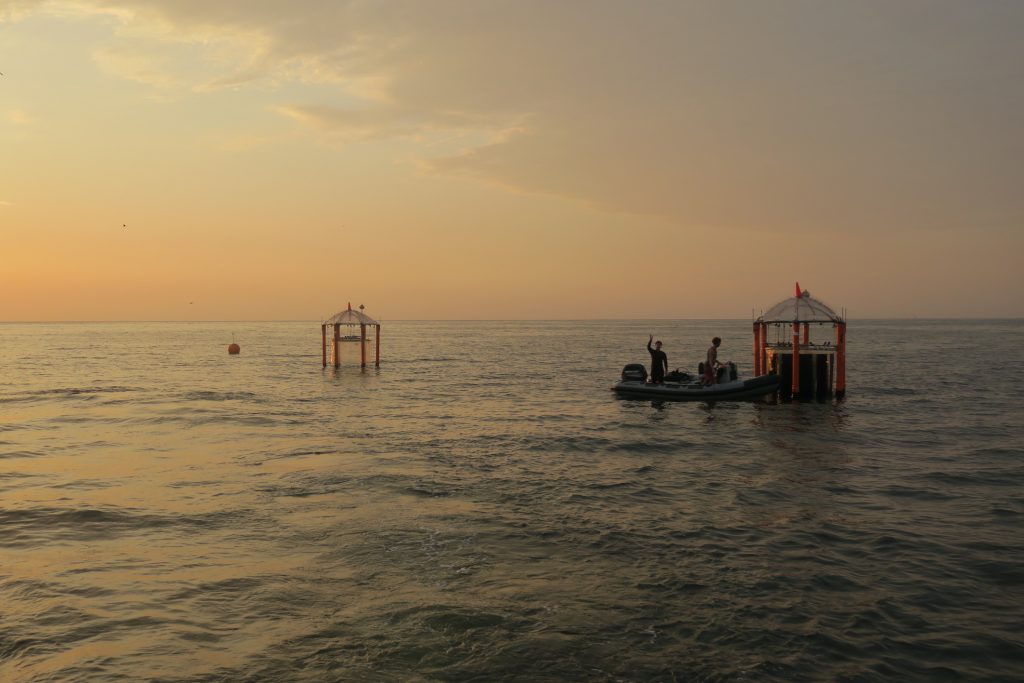
Ulf Riebesell